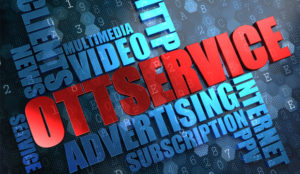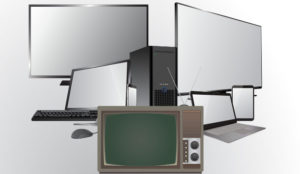
More than just a marketing gimmick, gamification has the potential to inject new life into a variety of industries and broaden the appeal of many new and existing offerings.
The term “gamification” describes the use of game mechanics, such as challenges, achievements and rewards, to drive certain consumer behaviors in what are traditionally non-gaming contexts, such as television services, energy or health.
Currently, more than 40 percent of U.S. consumers play video games at least once per month, and that percentage is increasing with the growing adoption of smartphones and tablets.
Make It Fun
By introducing a gamification initiative, companies can achieve multiple objectives:
- attract new users/customers, including hard-to-reach segments;
- retain existing users/customers;
- engage existing users/customers, consequently driving their actions toward specific behaviors (such as more spending); and
- differentiate offerings from those of competitors.
Gamification captures audience attention but also heightens engagement, introducing fun into routine, often staid activities. It can leverage social networks’ viral nature to build buzz around a specific offering and thus improves advertisers’ chances to attract broader, more engaged audiences.
Retail has been one of the first industries to benefit from gamification. E-commerce poses a substantial threat to physical retailers. In addition, consumers frequently use brick-and-mortar chains, such as Best Buy or Barnes & Noble, as showrooms for online retailers.
Enhance the Experience
Gamification enables retailers to bring consumers in and enhance engagement within the store. The broad diffusion of mobile devices enables location-based gaming, the most popular being Foursquare. Through the Foursquare app, retailers can reward consumers who check in at a store’s physical location and encourage price comparisons, non-discretionary spending and repeat visits.
Gamification is often confused with loyalty programs. In reality, not all loyalty programs have gamification elements and often lack game mechanics that are common in “gamified” programs. These programs have no challenges, competitions, badges or other key aspects of games that would incent behaviors beyond simple purchase transactions.
Airlines have built some gamification into their frequent-flier programs as they reward their best customers with elite status at certain earning levels. However, few fliers would describe their airline’s loyalty program as fun or engaging. Few frequent flier programs offer challenges, competition with other players or an active community that allows fliers to compare their statuses and compete with each other.
The Reach of Gamification
The deregulation of energy markets around the world has led to more competition among energy retailers. In addition, market restructuring has forced electricity retailers to think of users as customers for whom they must compete. Because little differentiation exists for the fundamental service (electricity) beyond price, this greater competition has led electricity retailers to explore programs that will affect customer engagement and loyalty. For example, Reliant Energy has deployed gaming activities to some customers that incentivize energy savings.
In-home monitoring and remote energy management also offer opportunities to differentiate electricity services. These services inform users of their current electrical usage and its cost and enable the user to remotely turn off and on electrical appliances. Gamifying the use of energy management devices and platforms is more likely to create lasting engagement for consumers.
Gamification of television programming can foster greater engagement, provide access to a related community of viewers, and incent viewing of programs and advertisements. Several companies have created gamification platforms or services that enhance consumers’ TV watching experience and provide rewards for participating. TV channels also use gamified websites to attract audiences and keep them engaged with their content.
Brands can use gamification to engage consumers during commercials and to enhance a brand’s appeal among certain demographics. Several brands, including Best Buy, Teleflora, and Pepsi, enhanced their Super Bowl commercials with Shazam integration. Viewers were able to use the music identification app during commercials to unlock rewards, such as discounts, gift cards, and sweepstakes. While the gamification aspect was limited, it showed the potential of extending the impact of commercials beyond traditional viewing window.
Above the Competition
Consumer packaged goods have a low price relative to durable goods and a limited shelf life. Profitability commonly relies on achieving high volume sales and maintaining a distinct brand that consumers choose among myriad alternatives. For these reasons, companies selling consumer packaged goods rely heavily on marketing and advertising to create brand recognition and mass appeal, including the development of unique logos, mascots or messaging. These companies also face increasing difficulty reaching certain segments of consumers who regularly use Internet-connected personal electronic devices but spend less time on traditional media.
Leveraging social networks offers significant potential for marketers of consumer packaged goods to reach target customers. Facebook and other online communities enable advertising to finely targeted audiences and allow deeper consumer involvement with a brand. Other consumer packaged goods brands have taken gamification more literally by reaching out to the growing number of people who play mobile games. For example, consumers who achieve certain goals on Kiip-supported mobile games can win tangible goods like samples or gift cards from brands such as Kraft, P&G, and Pepsi.
Beyond Selling
Applying gamification to education can make learning more enjoyable and ultimately more effective. For years, instructors have used the principles of success tracking (grades) and positive reinforcement via recognition, achievement, and rewards to motivate students; these are tools that are common to successful gamification programs. Terms like edutainment, educational games, and “serious” games are often used to describe the gamification of education. Gamification can also be applied to adult education, particularly to help with job-training effectiveness. Companies can promote specific behaviors and deliver rewards to employees who follow those behaviors and achieve results.
Health-related gamification encourage good habits while discouraging or stopping bad or addictive habits, based on behavioral change theories that recommend engagement with timely, positive feedback loops to reinforce good behavioral changes.
Gamification strategies will apply across many industries, leveraging cloud-based platforms and mobile apps to achieve the greatest possible reach. The potential benefits include improvements to brand perception, explanations of the benefits of complicated products, improvements in sales numbers, an increase in margins, driving customers to particular points of sale, and incenting referrals.
Adoption of tablets and smartphones will increase, and in the case of tablets, that increase will be dramatic, reaching approximately two-thirds of U.S. broadband households by 2013. These factors will drive wider adoption of gamification but will also lead to more discerning gamification consumers. As this market area develops, consumers will become much more selective about the programs in which they participate, forcing developers and brands either to simplify their programs in order to achieve the broadest possible adoption or to refine their strategies to have more targeted appeal among specific, well-defined segments.




















































Social Media
See all Social Media